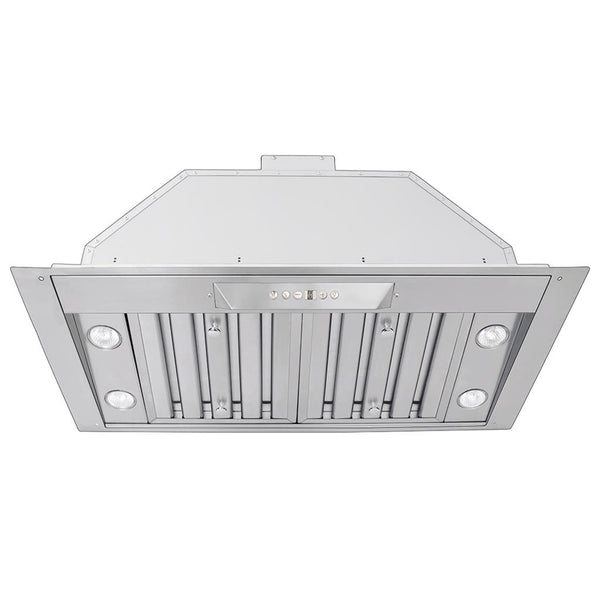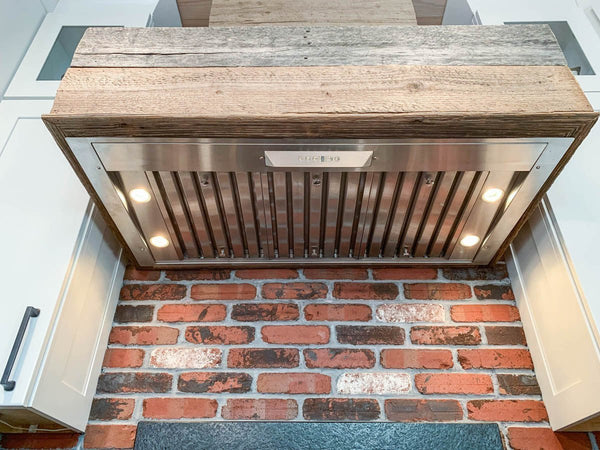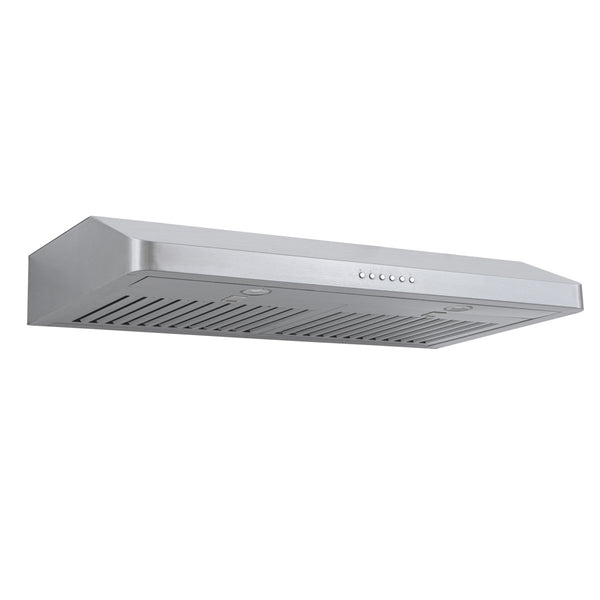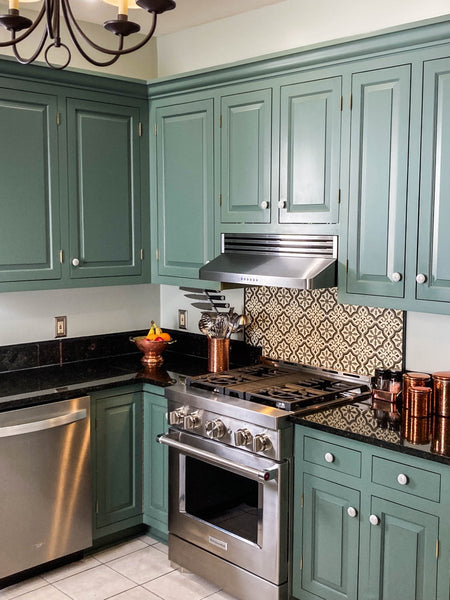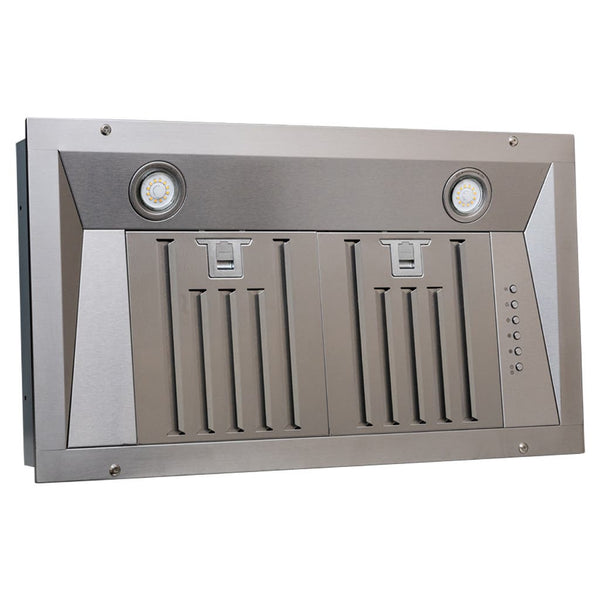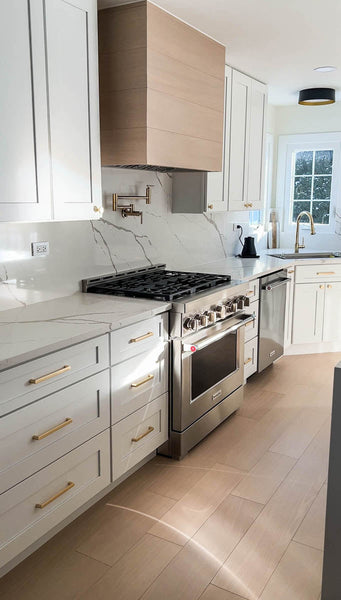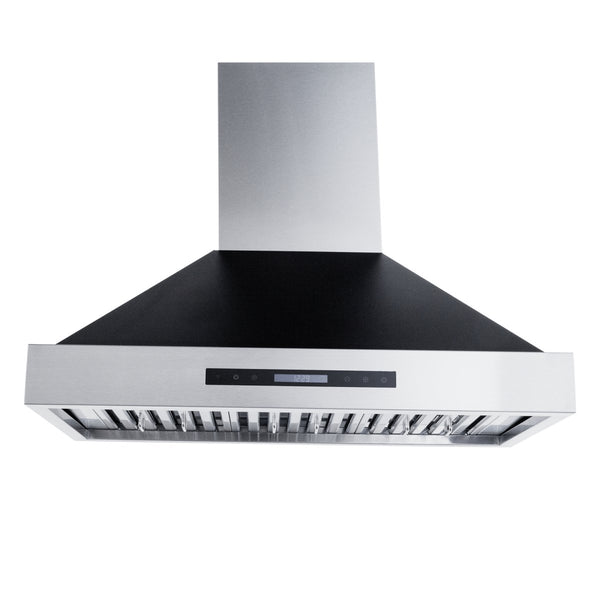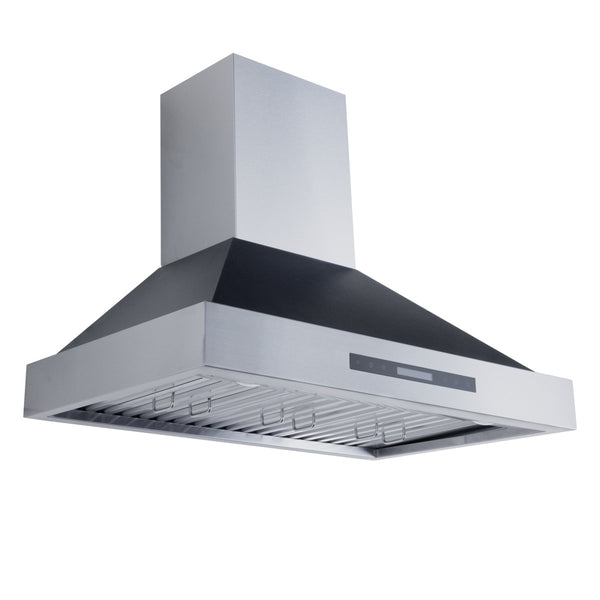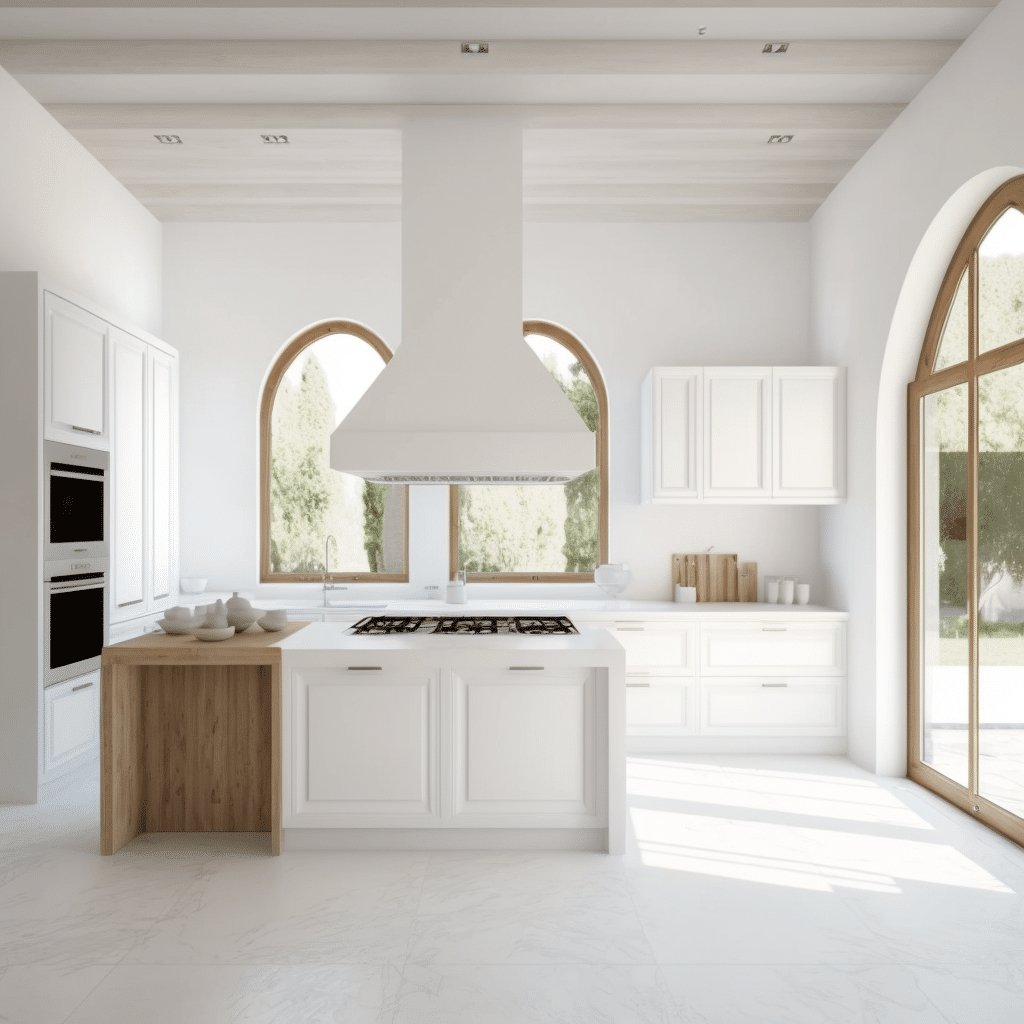Replacing your range can be an exciting but overwhelming decision, and I'm here to help you navigate through it all.
When it comes to replacing your range, there are many things to consider. We'll run through the best steps to take and things to consider when looking for and buying your new range and discuss some frequently asked questions.
Questions to consider:
Will the new range fit in the existing space?
Be sure to measure the width, depth, and height of the space to ensure that the new range will fit properly. It's also important to measure the doorways and hallways leading to the kitchen to ensure that the new range can be delivered and installed without any issues.
If the new range is a different size than the old one, you may need to make adjustments to the cabinetry or countertop to accommodate the new size.
What's the difference between slide-in and stand-alone ranges?
When it comes to ranges, there are two main types: slide-in and stand-alone.
A slide-in range is designed to fit snugly between your kitchen cabinets, with the controls at the front of the range for easy access. This type of range typically has unfinished sides and requires a cabinet or countertop to be installed on either side to create a built-in look.
On the other hand, a stand-alone range, also known as a freestanding range, can be placed anywhere in your kitchen and has a finished back and sides. This type of range often has a backsplash and a control panel on the back of the range.
One key difference between the two types of ranges is their installation process. Slide-in ranges require a custom-fitted space, while stand-alone ranges can be placed in any location with the appropriate electrical or gas hookup.
Another difference is their appearance. Slide-in ranges are designed to be seamlessly integrated into your kitchen, while stand-alone ranges are meant to be more of a centerpiece and come in a wider variety of colors and finishes.
Ultimately, the choice between a slide-in and stand-alone range comes down to personal preference and your kitchen's layout.
How can you make space for a larger range?
If you're planning to upgrade to a larger range, you may need to make some adjustments to your kitchen space. One option is to remove any cabinets or obstacles that are in the way, but this can be a significant and costly renovation.
Another option is to consider a slide-in range, which is designed to fit flush with your countertops and cabinets, without the need for additional space on either side. Slide-in ranges have a more built-in look and can be a great option for smaller kitchens or when space is limited.
It's also important to measure the space carefully and make sure that the larger range will fit in the existing space. Be sure to consider not just the width, but also the depth and height of the range, as well as any clearance requirements for ventilation or safety. If you're not sure whether a larger range will fit in your kitchen, consult with a professional installer or a kitchen designer for advice.
Can you switch from an electric to gas range or vice versa?
Yes, it is possible to switch from an electric range to a gas range or vice versa, but it may require some modifications to your kitchen.
If you currently have an electric range and want to switch to gas, you will need a gas line installed to the location of the range. This can be done by a licensed plumber or gas fitter.
Conversely, if you currently have a gas range and want to switch to electric, you will need a dedicated 240-volt electrical circuit installed, which may require rewiring your kitchen.
It's important to note that switching from one fuel type to another can also impact your cooking experience, as gas ranges tend to offer more precise temperature control, while electric ranges can have more even heating.
Can you switch to a dual-fuel range?
Yes, it is possible to switch to a dual-fuel range. Dual-fuel ranges combine the precision of a gas cooktop with the even heating of an electric oven. They are a popular choice for serious cooks and bakers who want the best of both worlds.
If you currently have an electric range, switching to a dual-fuel range would require a gas line to be installed.
This can be a complex process and may require the services of a professional plumber. Similarly, if you currently have a gas range and want to switch to a dual-fuel range, you will need to have an electric outlet installed for the oven.
Before making the switch, it's important to consider the cost of installation and any additional modifications that may be required.
In contrast, a dual-fuel range offers precise temperature control and even heat distribution.
If upgrading to a professional range, what else needs to be upgraded?
If you are considering upgrading to a professional range, it's important to know that there are a few other things you may need to upgrade as well. First, professional ranges often require a higher voltage electrical supply than standard residential ranges, so you may need an electrician to upgrade your electrical system.
Additionally, professional ranges often require more ventilation than standard residential ranges, so you may need to install a more powerful exhaust hood or modify your kitchen ventilation system.
It's also important to ensure that your kitchen's gas supply is adequate to power a professional gas range, as these appliances typically require more gas than standard residential ranges.
And keep in mind that professional ranges are often much heavier and larger than standard residential ranges, so you may need to reinforce your kitchen floor or make other structural modifications to support the its weight.
Be sure to consult with a professional contractor or appliance installer to determine what specific upgrades may be necessary for your particular situation.
What to know about installing a new range in a different spot in the kitchen?
Installing a new range in a different spot in the kitchen can be a bit more involved than simply replacing an existing one. There are several things to keep in mind before you make the move.
- Make sure that the new location has the necessary electrical or gas hookups. If you're switching from an electric to the gas range or vice versa, you may need to hire a professional to install the new connection.
- To keep your kitchen comfortable while cooking, you'll want to make sure the new location has enough ventilation.
- Make sure that the new location has enough space around it. You need to leave space for opening the oven door and for any ventilation systems.
- Consider the placement of your new range in relation to your other kitchen appliances. You want to ensure that everything is easily accessible and that there is enough counter space available for prep work.
- Remember that moving a range may also require adjusting your kitchen cabinets or countertops. You may need to hire a contractor or carpenter to make these modifications.
How to save energy and money with a new range?
Newer ranges are more energy efficient, so by upgrading your will be using less energy and many. But here are a few additional ideas:
Choose a range with a self-cleaning feature that uses a steam cleaning option instead of high-heat cleaning. This will save energy and reduce your utility bills.
Look for a range with a convection feature. Convection cooking circulates hot air around your food, reducing cooking time and saving energy.
Select a range with a high-efficiency burner. These burners are designed to deliver the same amount of heat as traditional burners while using less energy.
Opt for a range with an induction cooktop. Induction cooktops are more energy-efficient than gas or electric cooktops because they heat the pan directly rather than the air around it.
Consider the size of the range. If you have a small kitchen, a smaller range may be more energy-efficient than a larger one, as it will take less energy to heat up and maintain temperature.
Look for a range with a timer and automatic shut-off feature. This will prevent the range from being left on for extended periods of time, saving energy and reducing the risk of a fire.
Induction tops use about half the energy of an electric range, helping you save energy and time in the kitchen. Did you know gas ranges can heat food faster than electric ranges?
Consider a range with a hybrid heating system that uses both radiant heating and induction heating. And for the oven, consider a convection oven, which circulates heated air, so it takes less time and energy to cook.
Lastly, some ranges have special speed-cleaning settings that use less energy than normal cleaning cycles. Self-cleaning conventional ovens are a good example of this.
The steps to follow when replacing your range:
Decide on a budget
It might seem obvious, but it's important to establish a budget for yourself. Prices for ranges vary widely, so it's important to figure out how much you are willing to spend before shopping.
Consider the features and style you want in a range, and then find options within your budget. Keep in mind that some features, such as a convection oven or a griddle, may come at an additional cost.
By deciding on a budget beforehand, you can narrow down your options and ensure that you're making a practical and informed purchase.
Choose the type of fuel for your range
The two main types of ranges are gas and electric, each with its own set of advantages and disadvantages.
Gas ranges provide more precise temperature control and can quickly heat up and cool down. They are also generally more energy-efficient and cost-effective over time. However, gas ranges require a gas line to be installed in your home, and you must have proper ventilation to prevent the risk of carbon monoxide poisoning.
Electric ranges, on the other hand, offer easier cleaning, and are typically safer as they do not produce an open flame. They are also less expensive upfront and do not require a gas line. However, electric ranges can take longer to heat up and cool down, and they may be less precise in their temperature control.
Ultimately, the type of fuel you choose for your range will depend on your personal preferences and the setup of your home. Consider the pros and cons of each option to make an informed decision.
Carefully measure the space where the range will go
Before purchasing a new range, it's important to measure the space where the range will be installed. This will ensure that the range you select fits properly and will not cause any problems with the surrounding cabinets or countertops.
To measure the space, use a tape measure to determine the width, depth, and height of the area where the range will go. Make sure to measure the space accurately, as even a small mistake can result in a range that does not fit properly.
Ensure that your doorway and hallways lead into the kitchen are sized accurately so that the new range can be easily accommodated. If you aren't sure about your ability to measure accurately, consider hiring a professional.
You can avoid costly mistakes or installation issues by carefully measuring your space before installing your new range.
Choose a style of range
When selecting a new range, it's important to choose a style that not only fits your needs but also matches the overall aesthetic of your kitchen. Here are a few styles to consider:
Freestanding Ranges: These are the most common types of ranges and are designed to stand alone in the kitchen. They typically have a back panel with controls and are available in gas and electric models.
Slide-In Ranges: These ranges have a built-in look, as they are designed to fit in between two cabinets. They have no back panel, and the controls are located on the front of the range.
Drop-In Ranges: These ranges are installed into a custom-built cabinet or counter and give a seamless look to the kitchen. They are available in both gas and electric models and are typically more expensive than freestanding or slide-in ranges.
Dual-Fuel Ranges: These ranges combine the best of both worlds by offering a gas cooktop and an electric oven. They are typically more expensive than single-fuel ranges but offer the benefits of both fuel types.
It's important to choose a style of range that not only fits your needs but also matches the overall aesthetic of your kitchen. Consider the size and layout of your kitchen, as well as your personal preferences, when making your selection. Whether you choose a freestanding, slide-in, drop-in, or dual-fuel range, make sure that it fits your space and your lifestyle.
Pick a color and finish for the range
Of course, you want your new range to look good in your kitchen.
Make sure the color and finish you choose not only looks good but is also practical and easy to clean. Whether you opt for a classic stainless steel, sleek black, bright white, or a colorful range, choosing the right color and finish will help tie your kitchen together.
Here are some finish options to consider:
Stainless Steel: This is the most popular finish for ranges, as it looks sleek and modern. It is also easy to clean and matches well with other stainless steel appliances.
Black: This finish provides a classic look and pairs well with other black appliances. It is also easy to clean and hides smudges and fingerprints well.
White: A white range provides a clean and classic look, and it can help brighten up a dark kitchen. It is also easy to clean and pairs well with other white appliances.
Colorful: If you want to add a pop of color to your kitchen, consider a range in a bold hue like red, blue, or green. This can be a fun way to add personality to your space.
When picking a color and finish for your range, think about the overall design of your kitchen and how the range will fit in with other appliances and finishes.
Select the types of burners you want on your new range
When replacing your range, it's important to consider what types of burners you want. When selecting the types of burners you want on your range, think about the types of meals you like to cook and the level of heat you need. Consider getting a range with a mix of burner types to accommodate different cooking needs. With the right types of burners, you can take your cooking to the next level.
Here are some options to consider:
Gas burners: These are the most common type of burners on ranges. They provide instant heat and precise temperature control, making them ideal for cooking a variety of dishes.
Electric burners: They provide even heat distribution and are easy to clean.
Induction burners: They are becoming increasingly popular due to their energy efficiency and safety features. They use electromagnetism to heat the cookware directly, rather than heating the burner surface.
Dual-fuel burners: They offer the best of both worlds by combining gas burners with an electric oven. This allows for precise temperature control on the burners and even heat distribution in the oven.
High-powered burners: If you do a lot of high-heat cooking, consider getting a range with high-powered burners. These burners provide more heat output than standard burners and can help you cook your meals faster.
Decide on any additional features you may want
When replacing your range, there are a number of additional features that you may want to consider. Here are some options to think about:
Convection: A convection oven uses a fan to circulate hot air around the food, resulting in faster and more even cooking. This feature can be especially helpful for baking.
Self-cleaning: Many ranges come with a self-cleaning feature, which can save you time and effort when it comes to cleaning the oven. Some models even have a steam cleaning option, which uses water and heat to clean the oven without the need for harsh chemicals.
Wi-Fi connectivity: Some ranges now come with Wi-Fi connectivity, which allows you to control the oven from your smartphone or tablet. You can preheat the oven, set the timer, and even receive alerts when your food is done cooking.
Griddle: If you do a lot of grilling or cooking on a flat surface, consider getting a range with a built-in griddle. This can save you time and space, and make cooking a variety of dishes much easier.
Warming drawer: A warming drawer can be a great addition to your range, as it allows you to keep food warm while you finish cooking other dishes.
Double ovens: If you frequently cook large meals or multiple dishes at once, a range with double ovens can be a great option. This feature allows you to cook two dishes at different temperatures simultaneously.
Temperature probes: Some ranges come with built-in temperature probes, which allow you to monitor the internal temperature of your food without having to open the oven door.
Visit stores and websites to see the available options
When it comes to selecting a new range, it's important to get a sense of what's available on the market. One way to do this is to visit stores and websites to see what’s out there and the cost of all the extra bells and whistles you may want.
If you visit the stores in person, you'll get a better sense of the range's size, features, and overall quality by seeing and touching it. You can also speak with sales representatives, who can provide more information about the ranges and help you determine which ones might be a good fit for your needs.
Websites, on the other hand, offer a wider range of options and allow you to compare prices and features more easily. Many websites also have customer reviews, which can be helpful in determining which ranges are most popular and well-reviewed.
When visiting stores and websites, it's important to keep your budget and other requirements in mind. Avoid getting overwhelmed by all the options available by focusing on ranges that fit your specific needs.
Read reviews to see what other customers are saying
Before making a final decision on which range to purchase, it's a good idea to read reviews from other customers. Reviews can provide valuable insights into the performance, reliability, and overall quality of a range.
Many websites offer customer reviews, including the websites of major retailers and online marketplaces like Amazon. It's also worth checking out review sites and forums dedicated specifically to home appliances.
When reading reviews, it's important to keep in mind that some reviewers may have had a particularly good or bad experience, and their opinions may not be representative of the overall product. Look for patterns in the reviews to get a sense of what the most common issues and strengths are.
If you have friends or family members who have recently purchased a range, asking them for their thoughts and recommendations may also be helpful.
By reading reviews, you can feel more confident in your decision and avoid potential issues with your new range.
Choose the delivery and installation options that work best for you
Many stores offer delivery and installation services for an extra charge, which can be very helpful if you don't want to do it yourself.
When choosing delivery and installation options, make sure to ask about availability and pricing. Some stores may even offer free delivery or installation as part of a special deal! Just remember to ask so you know all your options.
If you choose professional installation, ask about any additional services they might offer. They may be able to help you dispose of your old range, too! Just be sure to ask about any extra charges for those services.
It's also important to make sure the delivery and installation date works for you, so don't forget to coordinate with the store or installer. That way, you can sit back and relax, knowing your new range will be arriving soon.
Arrange for the disposal of your old range
When you're getting a new range, it's important to think about what you'll do with the old one.
While you could just leave it in your home, it's likely taking up valuable space, and it's not doing anyone any good just sitting there.
Thankfully, many stores and installers offer services to remove and dispose of your old range, so you don't have to worry about it. These services can be very helpful, especially if you're not sure how to dispose of a large appliance like a range.
Before making delivery or installation arrangements, ask about old range disposal services.
This way, you can have peace of mind knowing that your old range will be taken care of and you can enjoy your new appliance without any extra clutter in your home.
What to look for in buying a range?
When buying a range, consider the size, fuel type, features, and budget. Look for a range that fits your cooking needs and kitchen space. Check for safety features and energy efficiency ratings. Read reviews and compare prices before making a purchase.
